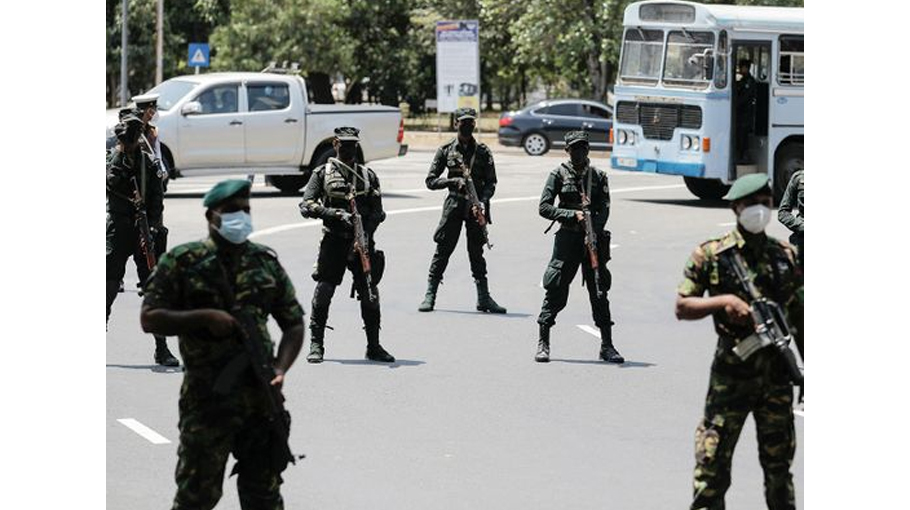What is fuelling Sri Lanka’s economic crisis?
Colombo might scrape through but any lasting solution needs a major political rethink

Sri Lanka is again in turmoil. The country’s cabinet has resigned en masse, the President has declared a public emergency as protests have engulfed the country as it has run out of fuel and food grains in many places.
Lanka lacks needed foreign exchange to import essential items, people are forced to spend hours in queues to get supplies, and there are prolonged power blackouts. The government scrambles to get loans from China, India, the IMF, and the World Bank to survive this unprecedented crisis.
This island country of 22 million, with immense natural beauty, had been enjoying relative peace since its three decades of civil war ended with a military victory in 2009. During the final years of the civil war and its aftermath, the Sri Lankan government borrowed heavily and went out of its way to bring foreign investment to boost the country’s economic growth.
The country’s economy fast-forwarded, and the per capita gross domestic product almost tripled in a decade. This catapulted the country in 2019 to the World Bank’s ranking as an ‘upper-middle-income country’.
This unsustainable economic miracle did not last long; like GDP, the country’s external debt also tripled, and the designation of ‘upper-middle-income country’ lasted only for one year. Several media reports project Sri Lanka as a victim of debt trap. However, the country’s economic trouble is much deep-rooted and multifaceted. Nearly 14 per cent of Sri Lanka’s public debt is from China, while the share of the international capital market is 36 per cent.
The Sri Lankan economy is facing this crisis due to decades of economic mismanagement. The country has incurred massive debt as successive governments have borrowed money without any fiscal discipline. Its foreign debt has reached $51 billion, and this year only it needs nearly $7 billion to repay as debt service. In the last two years, country’s foreign exchange reserve has dwindled more than 70 per cent, and it has now in its coffer only a little more than $2 billion.
With external support Sri Lanka might scrape
through the present financial crisis, but the country
may find a lasting solution hard to come by unless it
fixes its economic policies and politics
The fiscal mismanagement in the last 15 years has led to a classic economic problem — the country spends much more than its income, and it is unable to produce goods and services that it can trade to compensate for this growing deficit. Some events in recent years have further magnified this structural economic problem — some of them are exogenous factors, and others are government’s own making.
Tourism — on its knees
Sri Lanka’s tourist industry is huge, and it contributes $5 billion to the country’s economy. In 2018, the country had received more than 2 million visitors. A coordinated bombing attack in April 2019 in its capital killed more than 200 people and brought down the number of tourist arrivals.
The tourist industry never fully recovered, and the pandemic played its part for the last two years. Covid-19 also severely contracted the remittance money the country receives from the diaspora and migrant workers.
The Ukraine War has also compounded Sri Lanka’s economic woes. The country was needed to pay more due to the sudden increase in global oil prices. Sri Lanka imports large amounts of food grains from Russia and Ukraine, which has deepened both economic and food crises in the country. Moreover, the number of Russian tourists travelling to Sri Lanka dropped drastically.
Adding to the economic crisis was the massive tax cut given by the government in 2019. The decision to ban all chemical fertilisers in 2021, though reversed later, led to a significant drop in rice and tea production in the country. Foreign debt and pandemic have some contributions to the present economic crisis in Sri Lanka, but the root causes are poor fiscal decisions made repeatedly.
The government has also been stubborn in not seeking support from the IMF for a long time as the loan would require carrying out economic reforms, despite the currency losing most of its value and the country facing scarcity of essential commodities.
Instead, the government turned to China and India to bail it out. India has given a $1.5 billion credit line to buy essentials and fuel, while China is working out economic assistance of $2.5 billion. China and India compete for influence over the island country, so getting support from them is not without conditions.
The severity of the economic crisis finally forced the Sri Lanka to approach the IMF and World Bank. The financial aid and loans from China, India, IMF, and World Bank are possibly going to stabilise Colombo’s economic situation in the short run.
However the key factors behind country’s financial crisis are more political and less economical. Ethnonationalism and majoritarian mobilisation remains widespread.
With external support Sri Lanka might scrape through the present financial crisis, but the country may find a lasting solution hard to come by unless it fixes its economic policies and politics.
Ashok Swain is a Professor of Peace and Conflict Research, at Uppsala University, Sweden. Source: Gulf News





